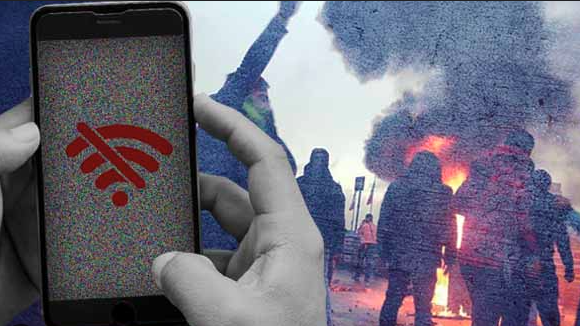In June 2025, reports emerged that Iran had intentionally restricted access to the internet across much of the country. While official explanations were limited, experts linked the move to fears of Israeli cyberattacks amid rising regional tensions. From disrupted VPNs to blocked encrypted messaging apps, Iran’s strategy seemed aimed at digitally isolating itself from potential intrusions. This incident is the latest reminder that cyber warfare is now a frontline tactic, not a supporting tool. 🧨 Cyber Has Replaced Missiles in Many Early Strikes Cyber warfare has evolved from isolated hacks into strategic, state-sponsored operations. Nations use malware, denial-of-service attacks, infrastructure disruption, and even misinformation as part of a broader campaign to weaken, destabilize, or surveil adversaries. Common Cyber Tactics in Modern Conflicts: Infrastructure Attacks: Targeting power grids, telecoms, or water systems Data Breaches: Extracting intelligence from government networks Psychological Warfare: Misinformation campaigns to influence public sentiment Surveillance Tools: Infiltrating communication channels and social platforms Preemptive Shutdowns: Like Iran’s, to reduce attack surface or suppress dissent 📵 Why Cutting Internet Access Is a Tactical Move For governments under perceived threat, shutting off or restricting digital connectivity serves multiple purposes: Reduces Entry Points for foreign hackers Disrupts Command-and-Control channels for potential internal dissent Limits Spread of Disinformation that could destabilize control Creates Ambiguity, delaying external response and media coverage But this comes at a cost: domestic economic disruption, loss of global visibility, and damage to digital trust and infrastructure confidence. 🛡️ What This Means for Businesses and Critical Infrastructure The Iran incident—and similar moves by other nations—should be a wake-up call to companies operating internationally. Your cloud workloads, distributed teams, and vendor connections may be impacted by a conflict far from your HQ. How to prepare: Implement geo-redundant cloud architecture Monitor nation-state activity tied to your industry or region Build offline recovery capabilities for worst-case digital isolation Include cyber warfare in your threat models and tabletop exercises 🔍 From Cyber Deterrence to Digital Doctrine Nations are developing offensive cyber units, publishing digital defense policies, and even classifying malware as weapons. As with nuclear deterrence in the 20th century, cyber capabilities are now part of national defense doctrine. The next war may not begin with missiles—but with malware in power grids, ransomware in banks, or deepfakes seeding panic. ✅ Final Thoughts Iran’s move to restrict the internet is not just about censorship — it’s a glimpse into how cyberspace is becoming the next active battlefield. For governments, businesses, and everyday users, digital resilience is no longer optional — it’s a matter of preparedness and survival.At TrustNet Solutions, we help organizations strengthen their security posture against cyber warfare tactics — from infrastructure hardening to international threat intelligence and scenario planning.
UBS Data Breach Traced to Third-Party Vendor Chain IQ
UBS, one of the world’s most prominent financial institutions, recently confirmed a data breach that exposed sensitive information of over 130,000 employees. The breach originated not from UBS’s internal systems, but from a third-party service provider, Chain IQ—a procurement and supply management partner. The compromised data reportedly includes employee names, contact information, and work-related details, though UBS clarified that no client financial data was affected. Still, the reputational and operational impact of this event is significant, especially in a highly regulated industry like finance. This breach is another example of how third-party and supply chain risks are becoming one of the biggest blind spots in enterprise security. Even if your organization invests in robust controls, your exposure extends to every vendor you rely on—particularly those with access to personnel or system-level data. 🔍 Key Lessons from the UBS Incident 1. Continuous Security Assessments Are EssentialDon’t treat vendor onboarding as a one-time event. Regular audits, security scorecards, and reassessments are crucial as threat landscapes evolve. 2. Apply Zero Trust to Vendor AccessVendors should be granted least-privilege access with continuous monitoring and real-time access restrictions based on risk signals. 3. Contractual Safeguards Must Be Non-NegotiableEnsure every vendor contract includes clear expectations for cybersecurity practices, breach reporting timelines, and liability in case of failure. At TrustNet Solutions, we help businesses build resilient third-party risk management programs through automated vendor evaluations, policy enforcement, and compliance tracking. Our approach ensures you don’t just trust your partners — you verify them continuously.


